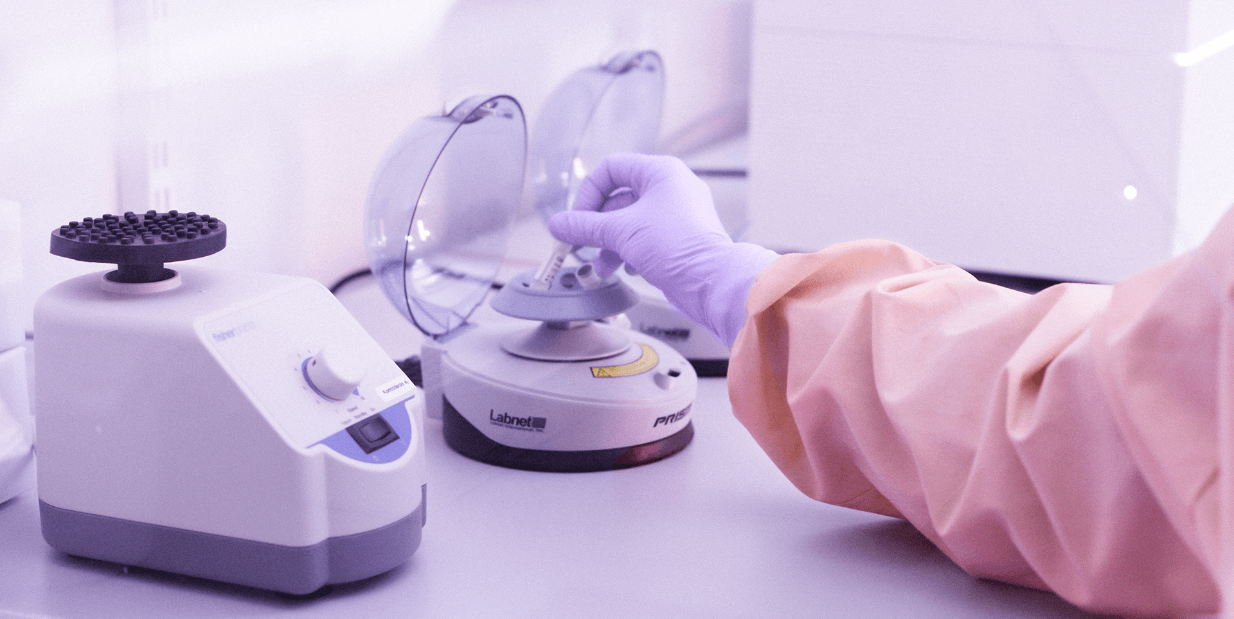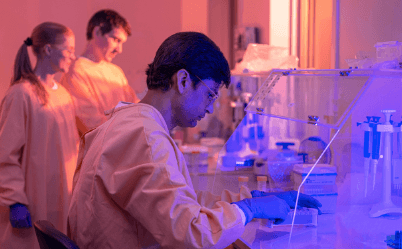Devyser wins Norwegian tender for Devyser CFTR at Oslo University Hospital
Devyser is proud to announce that the company has been awarded a tender by Oslo University Hospital...
Post-transplantation

Post-transplantation | September 2, 2022
Hematopoietic stem cell transplantation (HSCT) is the only curative treatment for patients with malignant or non-malignant hematological diseases. Although the outcome after HSCT has improved substantially over the years, allogeneic stem cell transplantation is still associated with several potential complications including toxicity related to the pre-treatment, infections, immune reactions such as graft-versus-host-disease (GVHD) and recurrence of the underlying malignant disease.
Hematopoietic stem cell transplantation (HSCT) is the only curative treatment for patients with malignant or non-malignant hematological diseases. Although the outcome after HSCT has improved substantially over the years, allogeneic stem cell transplantation is still associated with several potential complications including toxicity related to the pre-treatment, infections, immune reactions such as graft-versus-host-disease (GVHD) and recurrence of the underlying malignant disease.
Chimerism analysis remains an important diagnostic tool for monitoring patients after hematopoietic stem cell transplantation (HSCT). Most laboratories serving stem cell transplantation centers, therefore, offer chimerism monitoring in their diagnostic portfolio. To date, several technical solutions for chimerism monitoring are available, with short tandem repeats (STR) being the most common available method. Unfortunately, this method has a limited sensitivity with a limit of detection around 3-5 %.
Chimerism analysis serves three different diagnostic purposes: (I) detection of engraftment, (II) detection of threatening rejection and (III) monitoring of potential relapse in patients with increasing minimal residual disease (MRD). Monitoring for engraftment and rejection may well be served using methods such as STR-based analysis or NGS-based analysis. However, monitoring for potential relapse requires sensitive techniques with a limit of detection below 1 %, such as digital PCR, real-time quantitative-PCR or Next Generation Sequencing (NGS).
Micro chimerism is defined as mixed chimerism (MC) <1 % in the sample of interest and may be of importance when chimerism is analyzed in the context of MRD and relapse. Studies have shown that progression of MC to complete donor chimerism (CDC) generally occurs in the first 1–2 months post-HSCT and association with relapse risk is mainly found for patients with persistent increasing mixed chimerism (IMC).
These findings posed a question, addressed by a team from the Karolinska University Hospital in Stockholm, whether the kinetics of achieving CDC below 1% could be associated with outcome. This study by Lindahl and coworkers showed that early complete chimerism post-HSCT in patients with acute myeloid leukemia (AML), correlated inversely with relapse during the observation time. In this study, complete chimerism was defined as host DNA <0.1% in CD33+ (myeloid) enriched cells within the first 60 days after HSCT. The results from the study indicate that achievement of CDC assessed by sensitive methods detecting micro chimerism early after HSCT, appears to be useful for risk stratification in patients transplanted for AML. The findings of the Karolinska study may also be true for other malignant hematological diseases and follow-up studies are hopefully to come.
One issue that could not be addressed in the Karolinska study, was the importance of micro chimerism in predicting imminent relapse. Several studies have shown that IMC, even from a low level, is associated with relapse of AML. The main reason for the lack of association of IMC and relapse in the Karolinska study appears to be caused by to sparse sampling, especially of blood. Increased sampling of blood and bone marrow, especially in the early phase after HSCT, may therefore further increase the predictive power of chimerism monitoring in the clinic..
Important findings from this and other studies are, using an assay offering high precision and sufficient sensitivity (preferably <1 %). Secondly, frequent sampling is an advantage to monitor the dynamics of MC especially if the center is interested in micro chimerism as a diagnostic tool for MRD detection. To minimize the inconvenience for the patient of frequent bone-marrow sampling, peripheral blood may be an acceptable sample source for frequent chimerism monitoring. Finally, as the Karolinska study shows, chimerism analysis in DNA from cell-sorted samples may be preferred over total DNA to reduce noise from DNA of non-relevant blood cells.
References.
Lindahl, H., S. Vonlanthen, D. Valentini, A. T. Bjorklund, M. Sundin, S. Mielke and D. Hauzenberger (2022). "Lineage-specific early complete donor chimerism and risk of relapse after allogeneic hematopoietic stem cell transplantation for acute myeloid leukemia." Bone Marrow Transplant.


Devyser is proud to announce that the company has been awarded a tender by Oslo University Hospital...
Read More

Devyser, a leading provider of advanced genetic testing solutions, has been awarded a new tender in...
Read More

Devyser is proud to announce that One Lambda Devyser Chimerism and Advyser Chimerism have been...
Read More

Devyser today announced that the Centers for Medicare & Medicaid Services (CMS) has issued its...
Read More